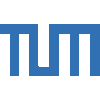Research Unit Seminar
Marta Lewicka: Geodesics and isometric immersions in kirigami.
2021-12-03
Online
- Speaker: Marta Lewicka (University of Pittsburgh)
- Date: Dec 03, 2021 16:00
- Location: Online,
- Zoom conference: https://t1p.de/nnt7
Abstract
Kirigami is the art of cutting paper to make it articulated and deployable, allowing for it to be shaped into complex two and three-dimensional geometries. We are concerned with two questions:
- What is the shortest path between points at which forces are applied?
- What is the nature of the ultimate shape of the sheet when it is strongly stretched?
Mathematically, these questions are related to the nature and form of geodesics in the Euclidean plane with linear obstructions (cuts), and the nature and form of isometric immersions of the sheet with cuts when it can be folded on itself. We provide a constructive proof that the geodesic connecting any two points in the plane is piecewise polygonal. We then prove that the full family of polygonal geodesics can be simultaneously rectified into a straight line via a piecewise affine planar isometric immersion.






